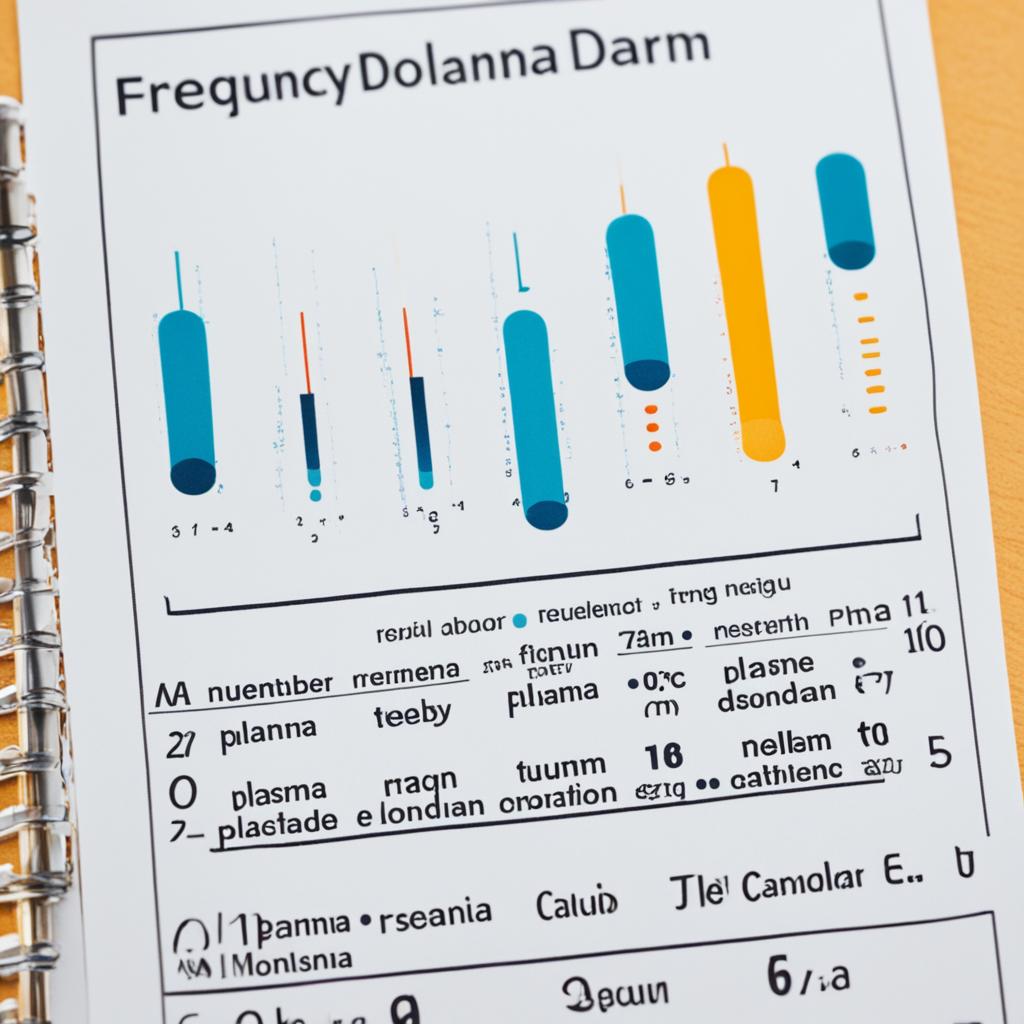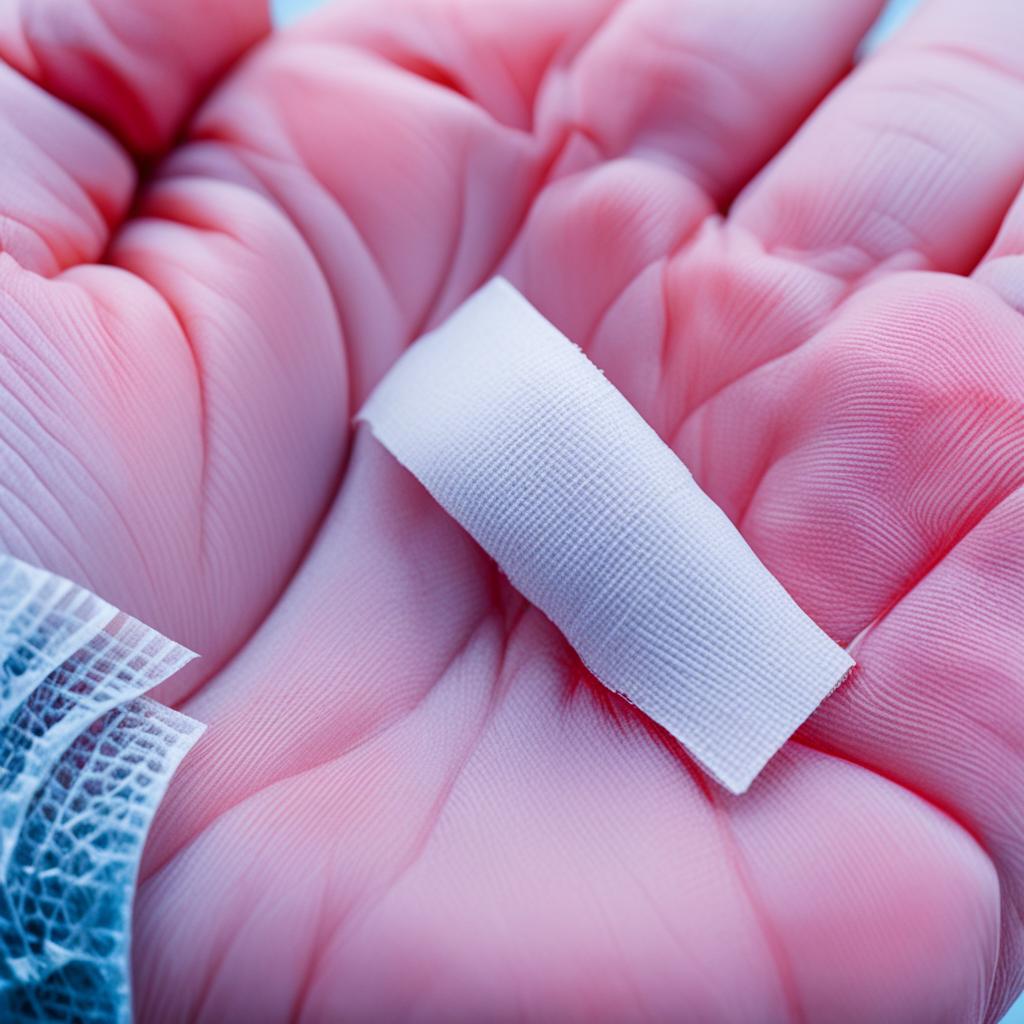Have you ever considered donating plasma? It’s a noble act that can help save lives. Plasma, a vital component of blood, is used in emergency situations to stop bleeding and treat various medical conditions. Before you decide to donate plasma, it’s important to understand the potential risks, side effects, and drawbacks associated with the process. Let’s explore what you need to know before becoming a plasma donor.
Key Takeaways:
- Donating plasma is a selfless act that can help save lives.
- However, it’s crucial to consider the potential risks and drawbacks before making a decision.
- Plasma donation may have side effects and health concerns that need to be taken into account.
- Ensure that you meet the eligibility requirements and understand the high-risk groups who should not donate plasma.
- There are alternatives to plasma donation that may also be worth exploring.
Importance of Certification in Plasma Donation Centers
When considering plasma donation, it is crucial to choose certified plasma donation centers that adhere to the high standards set by the International Quality Plasma Program (IQPP). These centers prioritize cleanliness, safety, and the well-being of both donors and recipients.
By selecting certified centers, donors can have peace of mind knowing that the facilities are sterile and well-maintained. The equipment used for plasma collection is sterilized and of the highest quality, ensuring a safe and hygienic donation process.
One of the key advantages of certified plasma centers is the presence of highly-trained professionals. These centers employ healthcare professionals who are experienced in plasma collection procedures. They undergo rigorous training to ensure they have the knowledge and expertise to handle donations efficiently and safely.
The strict adherence to protocols and guidelines in certified plasma donation centers minimizes the risk of bloodborne pathogens transmission. All equipment is designed for single-use only, preventing the potential for contamination and ensuring the safety of both donors and recipients.
Overall, choosing certified plasma donation centers provides a level of assurance and quality control. Donors can trust that their donations will be handled with care, professionalism, and in compliance with industry standards. By supporting these centers, donors contribute to the ongoing efforts of saving lives and helping those in need.
| Certified Plasma Donation Centers | Benefits |
|---|---|
| Adherence to International Quality Plasma Program (IQPP) standards | Ensures cleanliness and safety |
| Sterile facilities and equipment | Minimizes the risk of contamination |
| Highly-trained professionals | Expertise in plasma collection procedures |
| Strict protocols and guidelines | Prevents the transmission of bloodborne pathogens |
Eligibility Requirements for Plasma Donation
To donate plasma, there are specific eligibility requirements that individuals must meet. These requirements ensure the safety and well-being of both the donor and the recipient. Let’s take a closer look at the necessary criteria for plasma donation:
- Age Requirement: Donors must be at least 18 years old. However, in some states, individuals aged 16 or older may be allowed to donate plasma with parental consent.
- Good Overall Health: Donors should be in good overall health, free from any acute or chronic illnesses. This ensures that the plasma collected is of high quality and safe for transfusion.
- Minimum Weight: Donors must weigh at least 110 pounds (50 kilograms) to ensure that they have enough blood volume for plasma donation without compromising their own health.
- Medical Screening: Before donating plasma, individuals must undergo a thorough medical screening. This screening involves checking vital signs, such as pulse, blood pressure, and body temperature, to ensure that the donor is in a stable condition.
- Negative Virus Tests: Donors are required to test negative for bloodborne viruses, such as HIV and hepatitis. This is done through blood tests to ensure the safety of the collected plasma.
- Medical History Screening: Donors must provide a comprehensive medical history, disclosing any relevant information about their health, medications, and potential risk factors. This helps identify any conditions or circumstances that may affect the safety of the donation.
Meeting these eligibility requirements is crucial to ensure that the donated plasma is safe and beneficial for patients in need. By adhering to these guidelines, plasma donation centers can maintain the highest standards of quality and safety.
Throughout the donation process, the well-being and safety of the donor are paramount. The next section will explore what happens during the plasma donation process and what donors can expect.
High-Risk Groups Who Should Not Donate Plasma
When it comes to plasma donation, it’s important to consider the potential risks and ensure the safety of both the donor and the recipient. Certain individuals fall into high-risk groups and should refrain from donating plasma due to their specific circumstances. These groups include:
- Individuals who have recently injected drugs or used steroids not prescribed by a doctor.
- Those who have tested positive for HIV, the virus that causes AIDS.
- People who have had close contact with someone who had viral hepatitis within the past 12 months.
- Individuals with congenital blood clotting conditions, such as hemophilia.
- Those who have been diagnosed with tick-borne diseases, such as Babesiosis or Chagas disease.
For these individuals, donating plasma can pose additional health risks or complications. It is essential to prioritize their well-being and explore alternative ways to contribute to the community.
The Importance of Prioritizing Safety
“By identifying high-risk groups and establishing guidelines to ensure their exclusion from the plasma donation process, we can significantly reduce the chances of adverse events and protect both donors and recipients.” – Dr. Emily Wilson, Plasma Safety Expert
Comparative Data on High-Risk Groups
| High-Risk Group | Risk Factors |
|---|---|
| Recent drug users | Increased likelihood of bloodborne infections and compromised immune system |
| People with positive HIV tests | Higher risk of transmitting the virus through donated plasma |
| Individuals with contact with viral hepatitis | Potential transmission of hepatitis viruses to recipients |
| People with blood clotting conditions | Increased risk of complications during the donation process |
| Those with tick-borne diseases | Potential transmission of tick-borne diseases through the donated plasma |
Preparing for Plasma Donation
On the day of your plasma donation appointment, it’s crucial to prioritize your preparation to ensure a smooth and successful donation process. Taking the necessary steps before your appointment can help ensure your well-being and the quality of the plasma you donate.
Rest and Healthy Breakfast
Before your plasma donation, make sure you get a good night’s sleep to help you feel refreshed and energized. Additionally, having a healthy breakfast is essential to provide your body with the necessary nutrients and ensure stable blood sugar levels during the donation process. A balanced breakfast consisting of whole grains, fruits, and protein-rich foods is ideal.
Stay Hydrated
Hydration plays a crucial role in plasma donation. Drinking plenty of fluids before your appointment helps ensure that your veins are well-hydrated, making the donation process easier. However, please avoid coffee, tea, and alcohol, as these beverages can dehydrate you. Instead, opt for water or natural fruit juices to stay properly hydrated.
Avoid Oily/Greasy Food
Prior to your plasma donation, it’s important to avoid consuming oily or greasy food. These types of food can affect the quality of your plasma, potentially leading to complications during the donation process. Opt for lighter meals that are low in fat and rich in nutrients to support the overall health of your plasma.

By following these simple guidelines, you can ensure that you are adequately prepared for your plasma donation appointment. Prioritize rest, maintain a healthy breakfast, hydrate properly, and avoid oily or greasy food to support both your well-being and the quality of your plasma donation.
What to Expect During Plasma Donation
When you arrive at the plasma donation center, the process will begin with filling out a medical history form. This form helps the medical staff understand your overall health and any potential risk factors.
After completing the medical history form, you will undergo a medical screening that includes checking your pulse, blood pressure, and body temperature. These measures ensure that you are in good physical condition to proceed with the donation.
Additionally, a finger-prick test will be performed to assess protein and hemoglobin levels in your blood. This test helps the medical staff determine the quality of your plasma and if it is suitable for donation.
The entire plasma donation process typically takes around 90 minutes, including the time for registration, medical screening, and the actual donation itself. The donation process, from start to finish, typically lasts about 25 minutes.
Plasma Donation Process Timeline:
- Registration: Once you arrive at the center, you will be asked to provide identification and complete any necessary paperwork.
- Medical History Form: You will fill out a medical history form to provide important information about your health.
- Medical Screening: Your pulse, blood pressure, and body temperature will be checked to ensure you are eligible to donate.
- Finger-Prick Test: A small sample of blood will be taken from your finger to assess protein and hemoglobin levels.
- Donation: If you pass the medical screening and finger-prick test, the donation will begin. A trained professional will insert a needle into your arm to collect the plasma.
- Rest and Recovery: After the donation is complete, you will be given time to rest and recover. This allows your body to adjust and helps prevent any potential side effects.
- Refreshments: Once you have rested, the center will provide you with a drink and a snack to help replenish your energy.
- Departure: You are then free to leave the center, knowing that your plasma will be used to support medical treatments and potentially save lives.
Throughout the entire process, trained staff will be available to answer any questions or address any concerns you may have. They are there to ensure your comfort and well-being during the plasma donation.
Comfort and Safety During Plasma Donation
During the plasma donation process, your comfort and safety are of utmost importance. The donation center takes several measures to ensure a pleasant experience for donors.
Seating in a Reclining Chair
When you arrive at the donation center, you will be directed to a comfortable reclining chair. These chairs are designed to provide optimal support and relaxation throughout the donation process. Being able to recline allows you to find a comfortable position that suits you best.
Using a Pressure Cuff or Tourniquet
To facilitate the donation process, a trained staff member will place a pressure cuff or tourniquet on your arm. This helps to locate your veins, making it easier to insert the needle. The pressure cuff or tourniquet is applied gently to ensure your comfort and safety.
Safe Insertion of the Needle
The insertion of the needle is performed by highly skilled and trained staff members using sterile equipment. They follow strict protocols to maintain cleanliness and prevent any infections. The staff will ensure that the needle insertion is as painless as possible, prioritizing your comfort throughout the process.
Relaxation During the Donation
Once the needle is inserted and the donation begins, you will have the opportunity to relax. Many donation centers provide options such as listening to music or watching videos to help you pass the time comfortably. You can focus on enjoying your chosen form of entertainment while the donation takes place.
In conclusion, during the plasma donation process, you will be seated in a reclining chair for your comfort. A pressure cuff or tourniquet will be used to help locate your veins, ensuring safe and efficient donation. The needle insertion will be performed by trained staff members using sterile equipment. Throughout the donation, you will have the opportunity to relax and enjoy your chosen form of entertainment. The donation center prioritizes your comfort and safety throughout the entire process.
Post-Donation Care and Recovery
After a plasma donation, it’s important to take proper care of yourself to ensure a smooth recovery. The plasma center staff will provide you with essential instructions for post-donation care, aiming to promote healing and well-being.
First and foremost, caring for the site where the needle was inserted is crucial. You will receive detailed guidance on bandage care to prevent infection and promote speedy healing. Following these instructions diligently will help minimize any discomfort and ensure a healthy recovery.
Hydration plays a vital role in the recovery process after plasma donation. Drinking plenty of water is highly recommended to restore fluid levels and aid in replenishing lost nutrients. Remember, staying hydrated helps your body recover faster.
Rest and recovery are essential after donating plasma. Although the process may be relatively quick, taking time to relax and allow your body to recuperate is essential. It is advised to avoid any heavy lifting or strenuous exercise for the remainder of the day, giving your body the opportunity to restore balance and energy.
By following these post-donation care guidelines, you can ensure a smooth and comfortable recovery process. Caring for the bandage site, staying hydrated, and allowing yourself adequate rest are essential steps in taking care of yourself after donating plasma. Remember, your well-being is a priority, and taking these measures will contribute to a positive and successful plasma donation experience.
Usage of Donated Plasma
Once an individual has donated plasma twice, their donation can be put to use in life-saving treatments. However, it is crucial to ensure the safety and quality of the donated plasma before it can be shared with patients in need.
To maintain the highest standards, the plasma must be collected at the same center within 6 months. This process guarantees that the plasma has undergone the necessary safety tests and adheres to plasma center regulations. The goal is to provide patients with safe and effective treatments.
The U.S. Food and Drug Administration (FDA) plays a crucial role in overseeing plasma collection and distribution. They have stringent regulations in place to protect both donors and recipients. These regulations include requiring two separate tests on a person’s plasma to verify its safety for sharing with others.
By adhering to these regulations and conducting thorough plasma safety tests, plasma centers can ensure that the plasma donated by generous individuals goes on to make a significant positive impact in medical treatments.
Frequency and Scheduling of Plasma Donation
When it comes to plasma donation, understanding the frequency and scheduling of donations is crucial. By adhering to recommended guidelines, you can maximize your impact while prioritizing your health.
Individuals can donate plasma every 28 days, allowing for a sufficient recovery period between donations. This timing ensures that your body has enough time to replenish the plasma and maintain optimal health. It’s important to note that this frequency is in place to safeguard both donors and recipients, as regular donation maintains the quality and safety of the collected plasma.
During a calendar year, donors can contribute plasma up to 13 times, subject to the 28-day interval between each donation. This limit serves to prevent over-donation and optimize the well-being of individuals who wish to donate regularly. By following these guidelines, you can make a meaningful difference in the lives of patients in need, while also taking care of your own well-being.
Plasma centers understand the importance of efficiency and convenience for donors. As such, many centers offer the option to schedule return visits while you are present at the center. This feature allows you to choose a donation slot that suits your schedule and plan your contributions in advance. By scheduling committed visits, you can ensure a consistent supply of plasma to meet the growing demand.
Here is an example of a table that illustrates the maximum number of donations per year and the recommended timing between donations:
| Donations | Maximum per Year | Timing Between Donations |
|---|---|---|
| 1 | 13 | 28 days |
By following a regular schedule and planning your donations in advance, you can contribute to the ongoing need for plasma and support patients who rely on this life-saving resource.

Conclusion
While considering whether to donate plasma, it is crucial to take into account the potential risks and drawbacks involved. Eligibility requirements, such as age and overall health, play a key role in determining if plasma donation is right for you. Additionally, certain high-risk groups should refrain from donating due to specific circumstances that may pose health risks.
It is also important to consider the time commitment required for plasma donation. The entire process, including medical screenings and the actual donation, can take around 90 minutes. This should be taken into account, especially for individuals with a busy schedule.
However, if the risks and time commitment associated with plasma donation are not suitable for you, there are alternative ways to make a positive impact. Engaging in other charitable acts or making financial contributions to organizations in need can help support those in need without the potential drawbacks of plasma donation.
In the end, the decision to donate plasma should be well-informed and prioritize personal health and well-being. It is essential to weigh the potential risks, consider eligibility requirements, and evaluate the time commitment involved. Exploring alternative options to make a difference can also be a valuable choice.
FAQ
Why shouldn’t I donate plasma?
What are the risks of donating plasma?
What are the side effects of donating plasma?
Are there any dangers associated with plasma donation?
What are the health concerns associated with donating plasma?
Are there any drawbacks to donating plasma?
Is plasma donation safe?
What are the alternatives to plasma donation?
Source Links
- https://www.webmd.com/a-to-z-guides/qualifications-for-plasma-donation-and-what-to-expect-when-donating
- https://www.hhs.gov/givingequalsliving/giveplasma/giving-process
- https://www.cslplasma.com/start-donating
Money posts:
 How to Ethically Make Money Donating Plasma
How to Ethically Make Money Donating Plasma
 How to Make 200 Dollars Fast
How to Make 200 Dollars Fast
 How to Make $1000 Fast: 22 Easy Ways to Earn Money Quickly
How to Make $1000 Fast: 22 Easy Ways to Earn Money Quickly
 How to Make Money in One Hour: 20+ Ways
How to Make Money in One Hour: 20+ Ways
 15 Weird Ways to Make Money in [Year]
15 Weird Ways to Make Money in [Year]
 23 Best Side Hustles for Nurses (2024)
23 Best Side Hustles for Nurses (2024)
 How to Make $50 Dollars Fast
How to Make $50 Dollars Fast
 31 Part-time Jobs with Benefits in 2024
31 Part-time Jobs with Benefits in 2024

